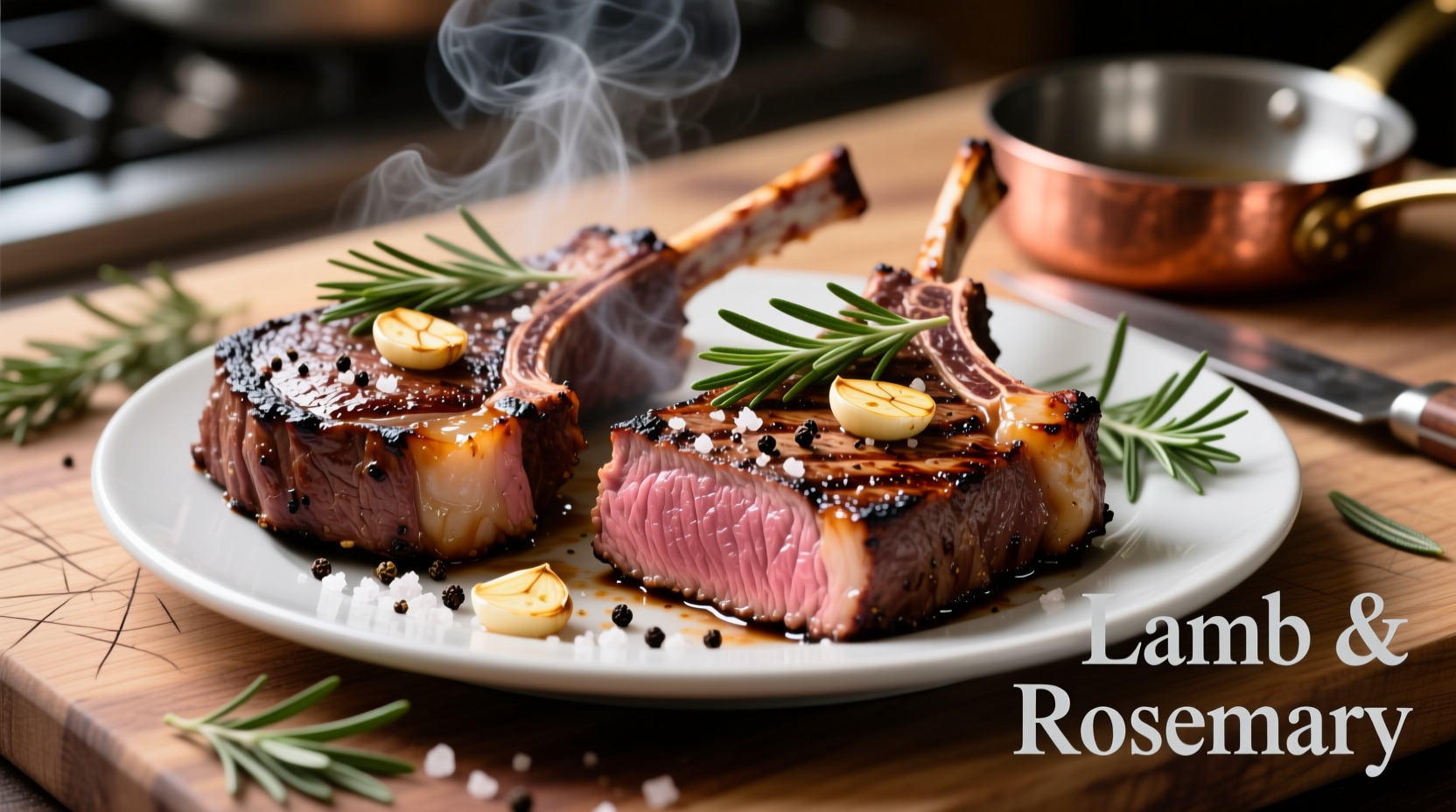Mastering lamb steaks transforms an expensive cut into a restaurant-quality meal with minimal effort. As a French-trained chef specializing in European culinary traditions, I've seen countless home cooks struggle with this elegant protein. The difference between dry, overcooked lamb and succulent perfection often comes down to three critical factors: proper temperature management, precise timing, and essential resting. This guide eliminates guesswork with science-backed techniques refined through decades of professional kitchen experience.
Preparation: Setting Up for Success
Quality lamb steaks start with proper selection and preparation. Look for cuts with fine marbling and deep red color - these indicate freshness and tenderness. The USDA recommends purchasing lamb from reputable sources that follow strict food safety protocols. Before cooking, remove steaks from refrigeration 30-45 minutes ahead. This crucial step ensures even cooking, as cold meat seizes when hitting hot pans.
| Lamb Steak Thickness | Room Temperature Time | Recommended Resting Time |
|---|---|---|
| 1 inch (2.5 cm) | 30 minutes | 5 minutes |
| 1.5 inches (3.8 cm) | 40 minutes | 7 minutes |
| 2 inches (5 cm) | 45 minutes | 10 minutes |
Season simply with coarse salt and freshly ground pepper 15 minutes before cooking. Avoid heavy marinades that mask lamb's distinctive flavor. For equipment, use a heavy cast-iron or stainless steel skillet - nonstick pans don't achieve proper sear. Have tongs ready and keep a meat thermometer accessible.
Cooking Process: Precision Timing and Temperature
Preheat your skillet over medium-high heat until a drop of water sizzles immediately. Add one tablespoon of high-smoke point oil like avocado or grapeseed. Place steaks in the pan without crowding - cook in batches if necessary. The sizzle should be immediate but not violent.
Cooking times vary by desired doneness:
- Rare: 2-3 minutes per side (120°F internal)
- Medium-rare: 3-4 minutes per side (130°F internal)
- Medium: 4-5 minutes per side (140°F internal)
The USDA Food Safety and Inspection Service recommends a minimum internal temperature of 145°F for lamb, followed by a 3-minute rest. However, professional chefs often serve lamb steaks at 130-135°F for optimal tenderness. Always use an instant-read thermometer inserted horizontally into the thickest part. Visual indicators include:
- Rare: Cool red center
- Medium-rare: Warm red center
- Medium: Warm pink center

Troubleshooting Common Issues
Problem: Steaks sticking to the pan
Solution: Ensure proper pan temperature before adding meat. Let steaks sear undisturbed for at least 2 minutes before attempting to move them.
Problem: Uneven cooking
Solution: Press thinner edges gently with tongs during cooking to ensure even contact with the pan surface.
Problem: Overcooked exterior, raw interior
Solution: Lower heat slightly and extend cooking time, or finish in a 350°F oven after searing.
Serving Suggestions for Maximum Impact
Resting time proves critical - never skip this step. Tent loosely with foil and let steaks rest 5-10 minutes depending on thickness. This allows juices to redistribute, preventing dryness when sliced. For presentation, slice against the grain at a 45-degree angle.
Classic French pairings include:
- Dijon mustard cream sauce
- Fresh mint pesto
- Roasted root vegetables
- Simple arugula salad with lemon vinaigrette
When selecting wine, choose medium-bodied reds like Pinot Noir or lighter Bordeaux varieties that complement rather than overwhelm lamb's distinctive flavor profile.











 浙公网安备
33010002000092号
浙公网安备
33010002000092号 浙B2-20120091-4
浙B2-20120091-4